|
|
|
Historic Memphis
Broadcasting |
|
...Early Radio
and the
beginning of TV |
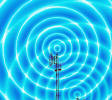
|
|
|
|
|
|
|
|
Radio
experiments had been conducted as early as 1897. By 1910,
a system was widely used in ship-to-shore-communication. This
was not true "broadcasting" but rather the "dot-dash" method
invented by Marconi. What made true broadcasting possible was
the invention of the audion vacuum tube by DeForest in 1906.
The tube permitted modulation of sound.
Voices
of Caruso were first broadcast in 1910. And other broadcasts
of various forms of vocal, music, and records were held from 1910 to
1917. When the U.S. entered WWI, all radio was taken
over by the U. S. Navy - and regulated under the "Wireless Act of
1910". |
|
|
|
|
|
Click
on small photos to enlarge them. |
|
|
|
|
Originally, Crystal Radios were the simplest type of radio receiver.
They could be handmade with a few inexpensive parts, like an antenna
wire, tuning coil of copper wire, crystal detector and earphones.
They produced rather weak sound and could only pick up stations
within a limited range. They were the first widely used type
of radio receiver and the main type used during the wireless
telegraphy era. They were the major driving force in the
introduction of radio to the public, contribution to the development
of radio as an entertainment medium until 1920. After that,
crystal sets were superseded by the first amplifying receivers using
vacuum tubes and crystals became obsolete for commercial use. |
|
|
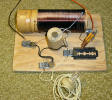 |
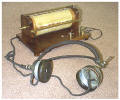 |
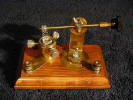 |
 |
 |
|
Crystal Set |
Crystal Set-Earphones |
Crystal Set |
Listening to Radio Program |
Early Crystal Set |
|
|
|
|
|
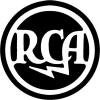 |
The
government removed restrictions late in 1919 - and the Radio
Corporation of America was formed to control the use of the new
equipment invented during the War. Thus "Formal
Broadcasting" is usually considered as beginning on November 2,
1920, when Westinghouse's KDKA-Pittsburgh broadcast the
Hading-Cox election returns and inaugurated a daily schedule of
programs. Throughout this period, broadcasting was on an
experimental, non-commercial, amateur basis. |
|
| |
 |
 |
 |
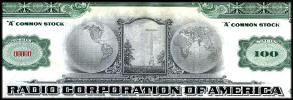 |
|
RCA ad |
Vintage RCA |
Francis Barraud |
1924 RCA Stock |
|
| |
| |
 |
 |
 |
 |
 |
 |
|
Vintage Radios
- showing progression of table models to large floor models |
|
| |
| |
 |
1923 to
1926 was a transitional period which saw the beginnings of
broadcasting on a commercial basis. Essentially, for the first
time, those in broadcasting saw a possible source of revenue
from sale of time, rather than the sale of receiving sets
<
The
first Memphis radio transmission was from the top of the Falls
Building in
1913. Memphis
radio station WKN began broadcasting in 1921, WREC began broadcasting in 1922 as KFNG and radio WMC
began broadcasting in 1923. |
|
| |
| |
|
|
| |
| |
|
WKN
New
evidence has been sent to us by Alfred Cowles, Jr. that his
father Alfred L. Cowles, Sr. started WKN, the first Memphis
radio station in 1921. It was on the roof of the original Riechman-Crosby
Building at Beale and Front Street. Mr. Riechman was the
distributor for Majestic Radios and felt the future was in
selling radios rather than in broadcasting. He offered
Cowles space at his building for the radio station.
Cowles was responsible, at 18, for the broadcast of every
program sent out by WKN - the Memphis Press-Riechman-Crosby
Radio Station. When WKN closed
down in a few years, it became WMC under a new charter. |
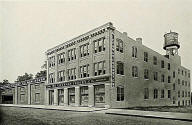 |
|
1st Riechman-Crosby
Bldg |
|
| |
|
|
|
Phonograph
recorded music generally dominated radio programming, although
in 1920, Alfred did broadcast a concert of the
Cincinnati Music Symphony from the old Lyric Theatre. To
accomplish this, he moved his entire setup - transmitter and
all, to the theatre and strung an antenna on top of the
building. He was 16 years old and a student at Central
High.
In 1938 Cowles and John H. Viser established Bluff
City Electronics to serve the ham and radio trade -
still in business. |
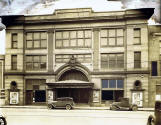 |
 |
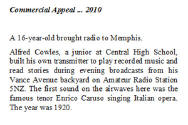 |
| |
Lyric Theatre 1929 |
Alfred Cowles |
CA item 2010 |
|
| |
| |
|
|
| |
| |
|
WMC
is one of
the few surviving radio stations in the U.S. to use its original
call letters. The station's first broadcast was January 19,
1923. The transmitter and tower were on the top floor of
the old Commercial Appeal building. Although Memphis was segregated,
early programs featured late
night concerts from blues singers. Bessie Smith performed at WMC in October of 1923.
In 1927 WMC gave Memphis and the mid-south its first network
programs when the station affiliated with NBC. In the 1930s, WMC was still owned by
The Commercial Appeal and carried the NBC Radio Red Network.
A transmitter building and tower were constructed on Highway 70.
That tower is now gone, but the art-deco building is still there.
In 1931, new studios were dedicated at the Hotel Gayoso.
Comedian Milton Berle was master of ceremonies. WMC also
broadcast a number of country and western artists from the old
Goodwyn Institute Building. Weatherman Dave came to WMC in
1977 and stayed for 30 years. In 1973 WMC became the first 24 hour full-time country station in
Memphis. By 1989 it switched to News/Talk. Today, it is
the city's oldest radio station and presently programs a sports
format. WMC spawned the TV station WMCT. |
| |
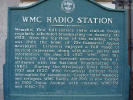 |
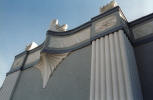 |
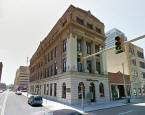 |
 |
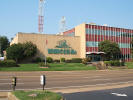 |
|
WMC Marker |
Old WMC on Summer |
Commercial Appeal |
Goodwyn Institute |
WMC radio building |
|
| |
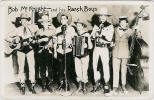 |
 |
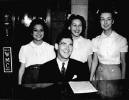 |
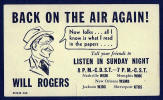 |
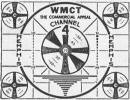 |
|
1940 Promo Card |
1946 Delmore Bros |
Olswanger 1941 |
WMC -
1930s |
WMCT pattern |
|
| |
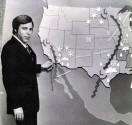 |
 |
|
 |
 |
 |
| Dave Brown
-Weather |
WMC-1930 |
|
EKKO Stamp |
1920s EKKO Stamp |
WMC
Tower |
|
| |
| |
|
|
| |
| |
|
WREC
signed on
for the first time on September 22, 1922 as
KFNG.
It was owned by electrical engineer and radio dealer Hoyt Wooten and
operated from his father's home in Coldwater, Mississippi. In
1925, he moved the station to Whitehaven and changed its call
letters to WREC. In 1929 WREC moved to studios in the basement
of the Peabody Hotel, where it remained for over 40 years.
WREC became well known as a major factor in local radio, featuring popular shows and
personalities. Sam Phillips began
his disc jockey career at WREC. In 1955, the station was
granted the right to operate a TV station and on December 31, 1955,
WREC-TV began operation as a CBS affiliate. Wooten sold his stations to Cowles Communications in 1963.
In 1971, the call letters of WREC-TV changed to WREG-TV.
|
| |
 |
 |
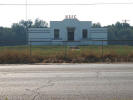 |
 |
 |
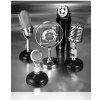 |
|
WREC Logo |
WREC |
WREC Station |
Mike |
Sam Phillips |
Mikes |
|
|
|
 |
 |
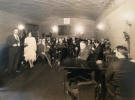 |
 |
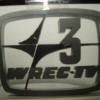 |
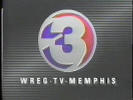 |
|
Hoyt Wooten |
1948 Ad |
1930 |
Hotel
Peabody |
WREC - TV |
WREG - TV |
|
| |
| |
|
|
| |
| |
|
1926 to
1930. Commercial radio became solidly established and networks
were developed. Programs were now sponsored by national
advertisers. The 1940s
included World War II and imposed as many hardships on broadcasters
as it did upon those engaged in other occupations. On the
other hand, revenues for both network and stations were greater than
in the prewar period. 1941 to 1945 was the big money-making
time for American radio. |
|
|
|
1945 to
1952 saw an enormous increase in the total number of radio stations,
the erection of 108 TV stations - and the beginnings of a shift in
importance from radio to television - especially on the network
level. |
|
|
|
|
|
|
|
|
|
|
|
WMPS
Radio Center was built in 1947 as the home of radio station WMPS.
It became a major part of Memphis music history and 's noted
for shaping the popular culture of Memphis and the country for over
50 years. It was primarily a country-western station and
shaped the early careers of Kay Starr and Eddie Arnold.
Disc jockey Bob Neal of WHBQ became Elvis' second manager.
Rick Dees began his career at WMPS in 1974 and quickly established
it as number 1 for the two years he was there. He was fired
for "conflict of interest". In 1985 the Radio Center
building became the home of station WDIA. The building has
recently been renovated and is now apartments and condos named
"Radio Center Flats". It was added to the National Register in
1983. |
|
|
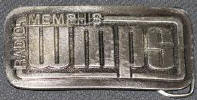 |
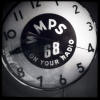 |
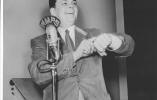 |
 |
 |
|
WMPS Logo |
WMPS Clock |
Bob Neal |
1957 |
1947 |
|
|
|
 |
 |
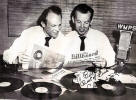 |
 |
 |
|
WMPS Station |
WMPS |
WMPS |
Souvenir |
WMPS |
|
|
|
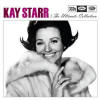 |
 |
 |
 |
 |
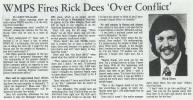 |
|
Kay Starr |
Eddie Arnold |
Matchbook |
Top 40, 1957 |
Top 40, 1959 |
WMPS fires Rick Dees |
|
|
|
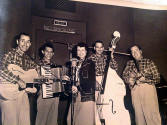 |
|
 |
 |
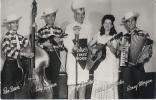 |
|
WMPS Country |
|
1974 Survey |
Bob Neal
Album |
WMPS 1950 |
|
|
|
|
|
|
|
|
|
|
|
|
WDIA
went on the air in June 1947 from
small studios on Union Avenue. The owners, John R. Pepper and
E. R. "Bert" Ferguson were white and the format was a mix of country and
western and light pop. The station didn't do well. Nat
D. Williams, a syndicated columnist and high school teacher, started
"Tan Town Jubilee in October 1948. It was the first program in
the U.S. to specifically target black-listeners. WDIA soon
became the number 2 station in Memphis. Shortly afterwards the
station made a switch to all-black programming and became the city's
top station. In 1954 they were licensed to increase power to
50,000 watts and with this powerful signal, were able to reach 10%
of the African-American population in the United States. Many
music legends got their start at WDIA, including B. B. King and
Rufus Thomas. Isaac Hayes was a regular on the station's Big
Star Talent Show. Elvis Presley was greatly influenced by the
station.
The station's public face was African-American, but the offices were
a model for integration. The station's first female
African-American disc jockey was Willa Monroe, who hosted a program
for homemakers. WDIA's impact was enormous, not just in
Memphis but in the whole USA. In 1985 WDIA moved to Radio Center - the former home of WMPS.
This building has recently been renovated and is now apartments and
condos named "Radio Center Flats". Clear Channel
Communications bought WDIA in 1996. |
|
|
|
|
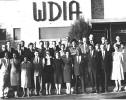 |
 |
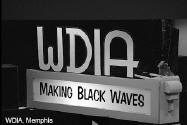 |
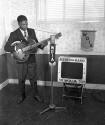 |
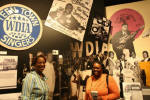 |
|
WDIA |
WDIA ad |
WDIA sign |
WDIA BB King |
WDIA |
|
|
|
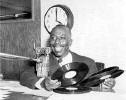 |
 |
 |
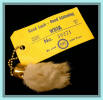 |
 |
|
Nat Williams |
1940s Poster |
WDIA - Poster |
WDIA Souvenir |
Rufus Thomas |
|
|
|
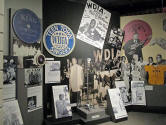 |
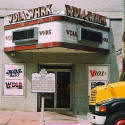 |
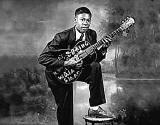 |
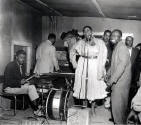 |
 |
|
WDIA Display |
WDIA 1948 |
BB
King WDIA |
Big Maybelle
WDIA |
R. Thomas
WDIA |
|
|
|
 |
 |
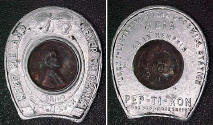 |
 |
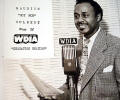 |
| Quiz 'em on the Air |
A. C.
Williams |
WDIA Lucky
Penny |
1947 |
Maurice
Hubert |
|
|
|
|
|
|
|
|
|
|
|
|
WHBQ
became famous in the 1950s for
playing rhythm and blues. Its legend was made by Dewey
Phillips, a disc jockey who played rhythm and blues music on his
1949-56 night-time show "Red, Hot and Blue", which was broadcast
from the mezzanine of the Chisca Hotel. In 1954, Phillips
played a recording of "That's Alright Mama", marking the first time
an Elvis recording was played on the air. And Elvis' first
radio interview was also conducted in the hotel by Phillips.
For many years WHBQ was owned by RKO and was like a tryout for
young, aspiring DJs like Rick Dees and Wink Martindale. They
worked there in hopes of being moved to bigger markets like Boston,
New York, and Los Angeles. Jack Parnell helped usher in the
rock and roll era on WHBQ with his deep resonant voice - frequently
referred to as "the voice of God". In 1960, WHBQ became "Boss Radio" .
By the 1970s, they could no longer compete with the FM stations.
In 1988, RKO sold the station to Flinn Broadcasting. Today the
focus has shifted from music to sports.
WHBQ-TV began operation on
September 27, 1953. It was originally a CBS affiliate but lost
that when WREC-TV signed on. WHBQ-TV then took the ABC
affiliation full time. It is Memphis' second oldest television
station, and the only one that has never changed its call letters or
channel location. It began as WNBR. Today, it is affiliated with the Fox
Network. |
|
|
 |
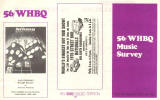 |
 |
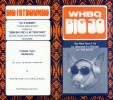 |
 |
 |
|
Flyer |
Flyer 1975 |
Flyer 1974 |
Flyer 1969 |
Flyer |
Flyer |
|
|
|
 |
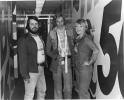 |
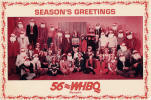 |
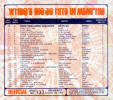 |
 |
 |
|
Dewey Phillips |
Rick Dees - etc |
WHBQ Xmas Card |
Top 40 - 1969 |
Sivad |
Sivad |
|
|
|
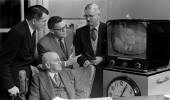 |
 |
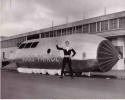 |
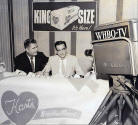 |
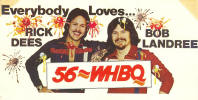 |
|
Lloyd T. Binford |
Wink 1955 |
Wink |
WHBQ - TV |
WHBQ - Rick Dees |
|
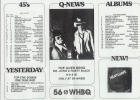 |
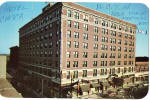 |
 |
 |
|
Survey 1975 |
WHBQ at the Chisca |
1966 |
WHBQ Add |
|
|
|
 |
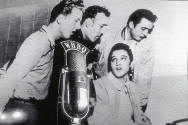 |
 |
 |
 |
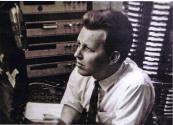 |
| Dewey Phillips
on TV |
Lewis-Perkins-Elvis-Cash |
1973 top 30 |
1970 top 30 |
1973 top 30 |
Jack Parnell -
1950s |
|
|
|
|
|
|
|
|
|
|
|
|
|
|
|
|
|
|
WHER
was the
first "All-Girl" radio station in the nation when it went on the air
in October 1955. It was the brainchild of Sam Phillips,
who used a portion of the $35,000 he made from the sale of Elvis
Presley's recording contract to finance the station. Kemmons
Wilson supplied a portion of the balance of the funding. He
also provided the stations' first home, in a part of the third
Holiday Inn ever built. At the station, women did it all:
On the air they read the news, interviewed local celebrities, and
spun the records. Behind the scenes they sold and created
commercials, produced and directed programming and sat the
station's control boards. Marion Keisker, a Sun Studio
assistant to Sam Phillips, and Sam's wife Becky, were part of the
female staff which kept WHER on the air for eleven years. The
station spawned a series of imitators, but later evolved into a
mixed-gender staff rechristened WWEE. |
| |
|
|
 |
 |
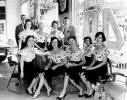 |
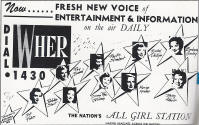 |
 |
 |
|
WHER - All Girls
|
Becky Phillips |
WHER girls |
WHER ad |
1962 slip |
WHER girls |
|
|
|
| |
|
|
| |
| |
|
KWEM
At
the Goodwyn Institute building, Jerry Manuel hosted a live music
show that was broadcast every Saturday night on radio KWEM.
The show was named "Saturday Night Jamboree" and was for amateur
musicians who had a "day job" and played music at nights. Some
of the musicians who played there had great success in a new field
of music called "rockabilly", including Johnny and Dorsey Burnette,
Johnny Cash, and Carl Perkins. A very young and totally
unknown Elvis Presley performed on several of the early shows in
1953. |
| |
|
|
| |
|
|
|
|
|
|
|
|
WNBR
This station goes
back to 1928.
By 1933
the "all-white" WNBR-Radio had begun broadcasting the weekly Amateur Night show from
the Palace Theater on Beale Street, where widely different musicians
performed blues, pop songs, jazz, and rhythm-n-blues numbers.
By the 1950s, WNBR had become much more famous as Memphis Radio
Station WHBQ .
The Station held popular contests where viewers could write in
and win prizes. Below is a rare "prize" or 3 Shirley
Temple photos from circa 1938. |
 |
| |
WNBR Stamp |
|
| |
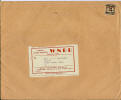 |
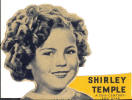 |
 |
 |
 |
 |
|
1938 Shirley Temple
Contest - Envelope and Prize |
1936 Scramble |
Depression Script |
|
| |
| |
|
|
| |
| |
|
WLOK
This was the
second Memphis station to offer programming directed entirely to the
black audience. The station purchased and moved to a new
building at the corner of Talbot and S. Second in 1958. In
1977, this radio station became the first Memphis radio station
owned by African Americans. It is now the #1 Gospel Radio Station in Memphis
and a favorite among visiting DJs, In 1963 WLOK changed
to its current frequency of 1340.
|
|
|
|
| |
| |
| |
|
WHHM
"...1340.
It was owned by Herbert Heriff Motors, hence the call letters WHHM.
It was country for most of its life and had the famous DJ Sleepy
Eyed John on it. In the 1960's it was taken over by Bill Gumble who
turned it into a rock station. It gave WHBQ and WMPS a run for
their for a while. They put out little stckers saying have you been
WHHM'd. You could listen every afternoon to the Bill Reeves
Blast. in the mid 60's Gumble had some legal truoble and lost the
license and the station went silent. That is when WLOK which was
then a daytimer at 1480 applied for 1340 which was a 24 hour
frequency. The FCC gave it to them and they are still there
today..." -
Walter Bolton , 1-6-2015 |
 |
| |
1961 Music Survey |
|
| |
|
|
|
WHEY
"...WHEY
was a day-timer at 1220 and it operated in Millington. It was a rock
station that was a little different and the kids liked it. It was
located in two stores in the back of a little shopping area on Navy
Rd. in Millington and it was aimed for the Navy Base It was the
station that George Klein had one of his first jobs and it was the
last place that Dewey Phillips worked before he passed away".
-
Walter Bolton,
1-9-2015 |
|
|
| |
| |
|
Network Shows
1930 to 1958
|
| |
|
|
Below are a few of the network shows folks listened to on
radio. Some of them made it to TV Programs. |
| |
|
Abbott and Costello (1940-1947)
Abie's Irish Rose (1943-44)
Adventures of Ellery Queen (1939-1948)
Ozzie and Harriet (1944-1954)
Sam Spade ( 1946-1951)
Superman (1940-1951)
The Thin Man (1941-1950)
Amos n' Andy (1929-1960) |
Backstage Wife ( 1935-1959)
Believe it or Not (1930-1948)
Bell Telephone Hour (1940-1958)
Boston Symphony (1926 - 1957)
Breakfast Club (1933-1968)
Burns and Allen (1932-1950)
Lights Out (1934 - 1947)
The Lone Ranger (1933-1954) |
|
| |
|
|
| |
| |
|
Miscellaneous
Memorabilia |
| |
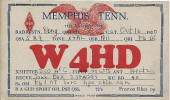 |
|
|
|
|
|
Radio Card 1930 |
|
|
|
|
|
| |
| |
| |
| |
|
|
|
|
|
|
|
|
|
|
|
Credits |
|
|
|
|
|
The
Historic-Memphis website does not intentionally post copyrighted
photos and material without permission or credit.
On
occasion a "non-credited" photo might possibly be posted because we
were unable to find a name to give credit. Because of the nature of
our non-commercial, non-profit, educational website, we strongly
believe that these photos would be considered "Fair Use. We have
certainly made no monetary gain, although those using this website
for historic or Genealogy research have certainly profited. If by
chance,
we have posted your copyrighted photo, please contact us, and we'll
remove it immediately, or we'll add your credit if that's your
choice. In the past, we have found that many photographers
volunteer to have their works included on these pages and we'll
also do that if you contact us with a photo that fits a particular
page. |
|
|
|
|
|
|
|
The "Historic-Memphis" website would like to acknowledge and thank the
following for their contributions which helped make this website
possible: Memphis
Public Library, Memphis University Library, Memphis Law Library,
Memphis Commercial Appeal, Memphis Press Scimitar, Shelby County
Register of Deeds, Memphis City Schools, Memphis Business Men's
Club, Memphis Chamber of Commerce, Memphis City Park Commission,
Memphis Film Commission, Carnival Memphis, Memphis Historical
Railroad Page, Memphis Heritage Inc, Beale Street Historic District,
Cobblestone Historic District, Memphis Historic Districts, Vance
Lauderdale Family Archives, Tennessee State Archives, Library of
Congress, Kemmons Wilson Family, Richard S. Brashier, Lee Askew,
George Whitworth, Woody Savage and many individuals whose assistance is
acknowledged on the pages of their contributions. Special
thanks to Memphis Realtor, Joe Spake, for giving us carte blanche
access to his outstanding collection of contemporary Memphis photos.
We do not have high definition copies of the photos on these
pages. If anyone wishes to secure high definition photos,
you'll have to contact the photographer or the collector.
(To avoid any possibility of contributing to SPAM, we do not
maintain a file of email addresses for anyone who contacts us). |
|
|
|
|
|
|
|
|
|
<><><><><> |
|
|
|
|
|
|